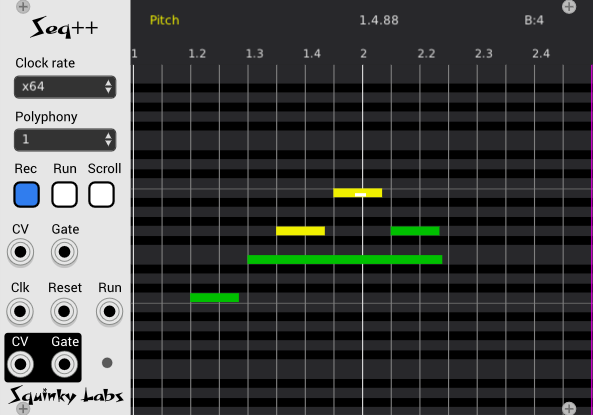Hi!
Well, I have a few things to say about this 
First of all, as @Olival_Clanaro mentioned, I did a few ‘covers’ to piano pieces and it was lots of fun. bringing such beautiful music into the modular environment is so interesting and can really help to learn all sorts of nice techniques and ways of patching with a more human feel.
I think there’s totally space for this in modular, and the results might be different yet still interesting and unique.
I will start with a sequencer. If I understand correctly, you want to stay away from Midi and things similar to Midi so I would recommend Foundry from Impromptu. It has 4 channels for pitch, gate, and CV, and you can create whole songs and progressions with it. Of course, if you need more than 4 voices, you will need to use another one and sync the two so they will run together.
I also recommend having another Foundry for modulation and triggering events. You can use also the pitch output for modulation, maybe adding some glide to it, and the gate output you can use for triggering events like, for example, ritardando and accelerando or even micro timing for playing rubato. Just make sure to have them all in sync so they’re running together. The same goes for velocity, you will have to sequence it together with the pitch sequence.
Since we’re in the modular environment, mixing sequenced modulation (tempo changes, velocity) with slow smooth random voltage, can add a lot of variation so try using something like Caudal (Vult) or Walk (BogAudio) and mix it with the sequenced signal.
You can add random smooth modulation to your clock as well so there’s always movement and it’s not so static. You can use an LFO as your master clock and FM it.
One more thing about Foundry. Depending on the piece you want to work with, you might need to use a higher clock resolution so you can add notes also in between when needed.
What I did with Satie is I sat down with the notes, and picked the 4 most important lines at each given time so I ended up with 4 voices all in all. This might help you stay in control and not have too many things going on at once.
All in all, it’s a lot of work but if you’re having fun, it’s totally worth it 




